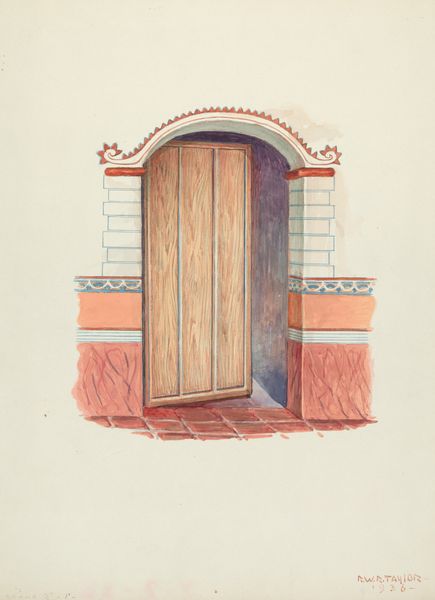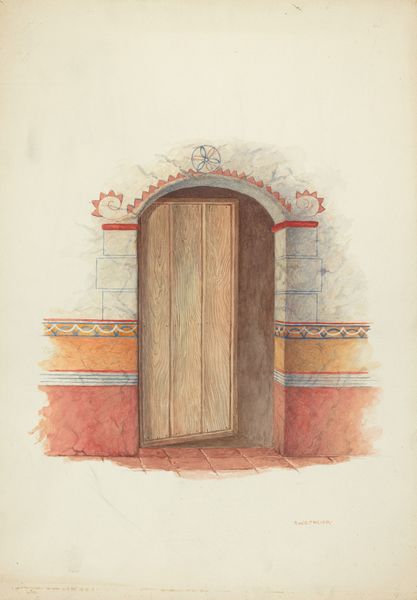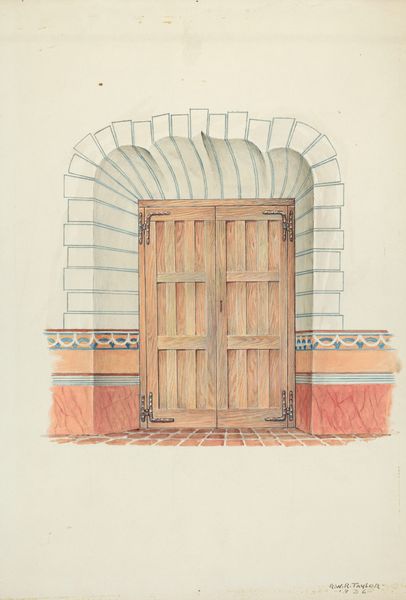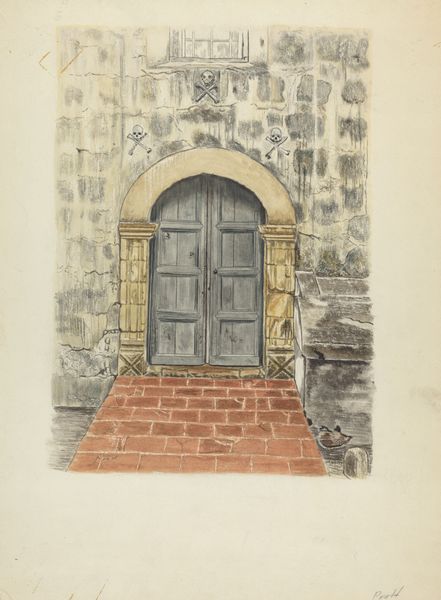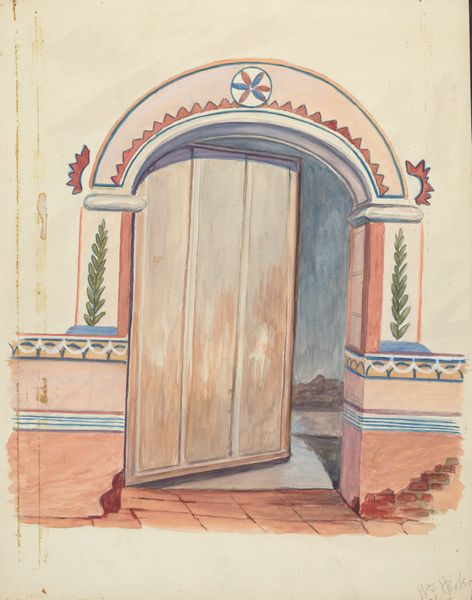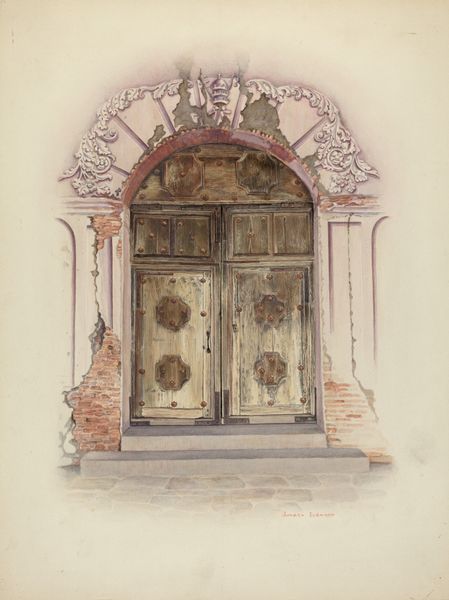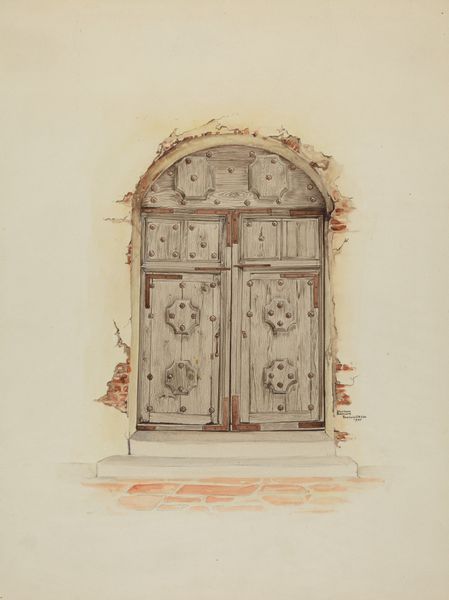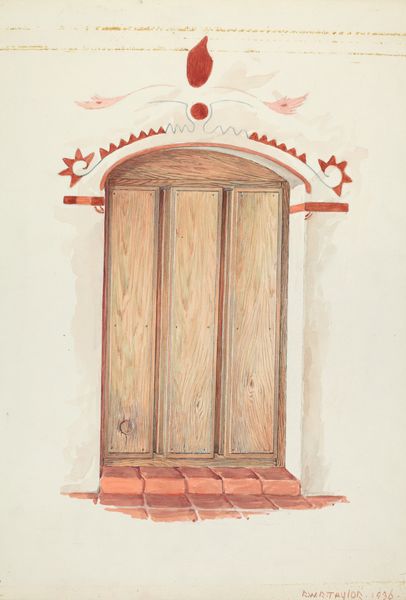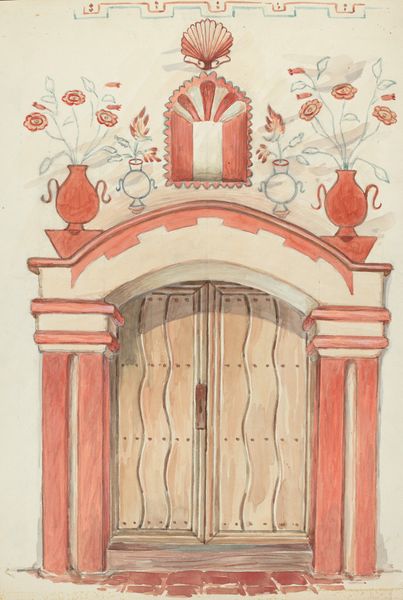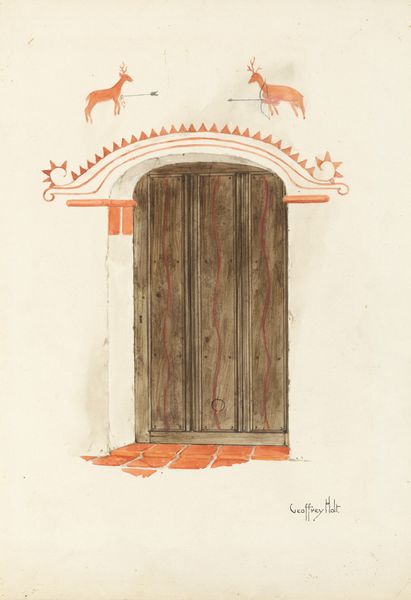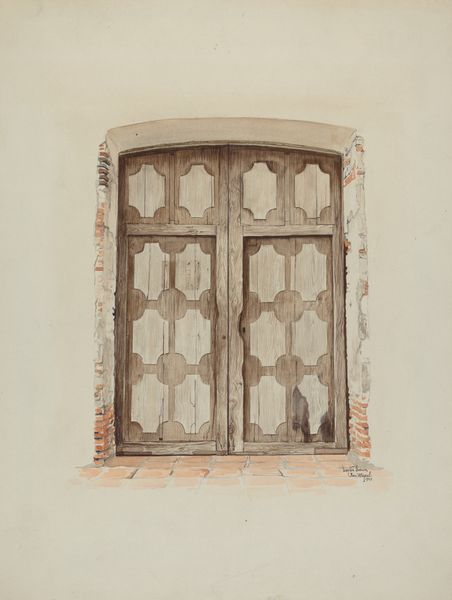
drawing, painting, plein-air
#
drawing
#
painting
#
plein-air
#
etching
Dimensions: overall: 33 x 24.3 cm (13 x 9 9/16 in.) Original IAD Object: 36" wide; 85" high
Copyright: National Gallery of Art: CC0 1.0
Editor: We’re looking at Robert Taylor's "Wall Painting" from 1936, a piece done with drawing and painting. It has a quiet, almost secretive mood. What strikes me most is the interplay of the flat wall surface versus the depth implied by the open door. What do you see in this piece? Curator: Structurally, the work hinges on a series of geometric oppositions. Consider how Taylor juxtaposes the verticality of the door panels with the horizontal bands of the wall. Notice the repeated arch motif; one flattened atop the doorway, another suggested by the implied curve of the shadow. Do you see how that visual echoing creates a sense of compositional unity? Editor: I see the repetition, yes. But the door isn't fully open, it is cracked. Does that impact how you interpret the formal composition? Curator: Absolutely. The partially open door is critical. It introduces a diagonal line, disrupting the otherwise rigid geometry and creating a dynamic tension. Furthermore, consider the interplay of light and shadow. The artist is drawing attention to depth using shadow, which creates further depth in an otherwise very flat surface. What do you think about the coloration in relation to light? Editor: The muted palette is interesting. The shadows seem less about darkness and more about subtle color shifts. I almost missed how that created a spatial effect. Curator: Precisely. Taylor masterfully uses a limited color palette to create nuanced spatial relationships and that adds visual intrigue to this simple work. It creates subtle dynamics by introducing shadow. Editor: This close examination really changed my perspective. I was so caught up in the subject matter I hadn't truly examined all of those relationships. Curator: Indeed, analyzing formal relationships enriches our engagement with any artwork.
Comments
No comments
Be the first to comment and join the conversation on the ultimate creative platform.
